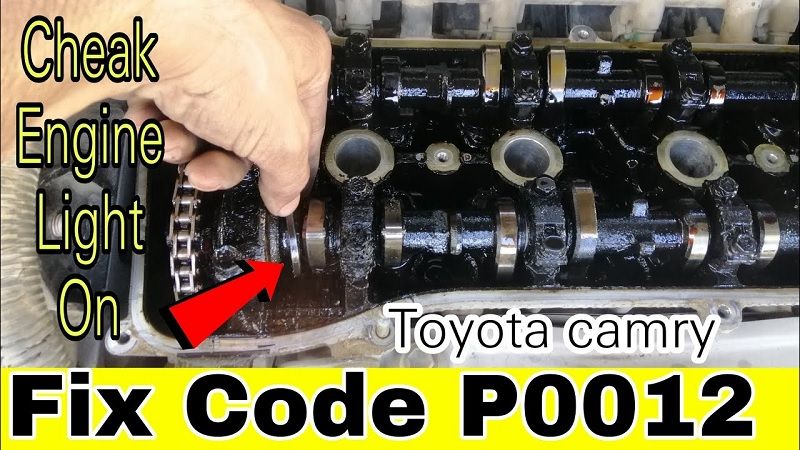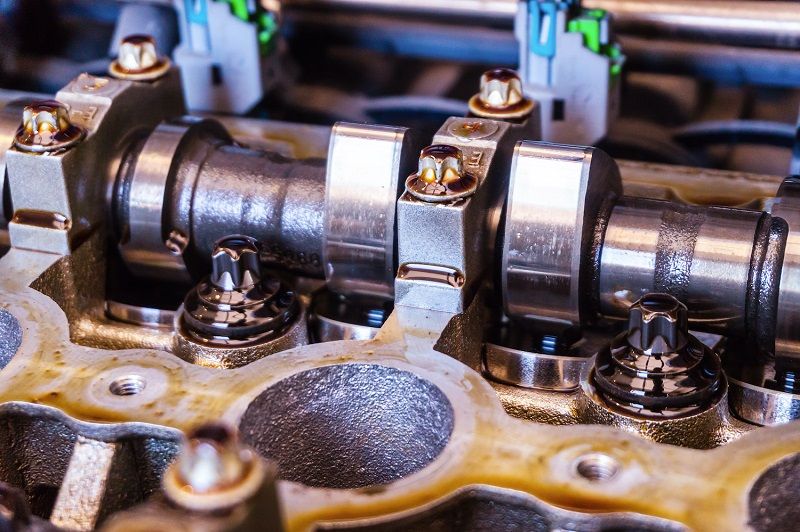This post contains affiliate links. This means I will make a commission at no extra cost to you should you click through and make a purchase [ “As an Amazon Associate, I earn from qualifying purchases.” ]. Read the full disclosure here.
Deciphering the P0012 Code: Understanding “A” Camshaft Position Timing Over-Retarded (Bank 1) GuideMechanic.Com In the realm of automotive diagnostics, error codes serve as vital clues, offering insights into the inner workings of our vehicles.
Among these codes, P0012 stands out, signaling an issue with the “A” camshaft position timing over-retarded on Bank 1 of the engine. While it may sound complex, understanding P0012 is crucial for maintaining optimal engine performance and reliability.
In this comprehensive guide, we’ll delve into the intricacies of the P0012 code, exploring its significance, potential causes, diagnostic procedures, and solutions.
See Also: P0011 Code “A” Camshaft Position – Timing Over-Advanced or System Performance (Bank 1)
Unraveling P0012 Code:

P0012 is an OBD-II diagnostic trouble code that indicates the camshaft timing on Bank 1 is over-retarded, specifically in the “A” camshaft position.
In simpler terms, it suggests that the timing of the intake camshaft on one side of the engine is excessively delayed. This timing discrepancy can have significant implications for engine performance, fuel efficiency, and emissions.
The Role of Camshaft Timing:
Before delving deeper into P0012, it’s essential to understand the role of camshaft timing in the engine’s operation. Camshafts are responsible for controlling the opening and closing of the engine’s intake and exhaust valves.
The timing of these events is critical for optimal engine performance, as it affects factors such as fuel combustion, power delivery, and emissions.
Causes of P0012:

Several factors can contribute to the occurrence of the P0012 code, including:
Faulty Camshaft Position Actuator:
The camshaft position actuator, responsible for adjusting camshaft timing, may be malfunctioning or failing to operate correctly.
Timing Chain Tensioner Issues:
Problems with the timing chain tensioner can lead to slack in the timing chain, resulting in timing discrepancies.
Oil Flow Restrictions:
Insufficient oil flow to the camshaft phaser or actuator can hinder its operation, leading to timing irregularities.
Camshaft Position Sensor Malfunction:
A faulty camshaft position sensor may provide inaccurate data to the engine control module (ECM), resulting in timing errors.
P0012 Code “A” Camshaft Position – Timing Over-Retarded (Bank 1)
Diagnostic Process:

Diagnosing the underlying cause of P0012 typically involves a systematic approach, often requiring specialized tools and expertise. A qualified technician may perform the following steps:
Code Reading:
Using an OBD-II scanner, the technician retrieves the P0012 code and examines freeze frame data to gain insights into the conditions that triggered the code.
Visual Inspection:
The technician inspects the camshaft position actuator, timing chain, tensioner, and related components for signs of wear, damage, or oil leaks.
Functional Testing:
Various tests, such as checking actuator operation, measuring oil pressure, and inspecting timing chain tension, may be conducted to identify the root cause of the timing discrepancy.
Data Analysis:
Advanced diagnostic tools can capture real-time data from engine sensors, helping pinpoint irregularities in camshaft timing and related parameters.
P0012 Code “A” Camshaft Position – Timing Over-Retarded (Bank 1)
Implications for Engine Performance:

Addressing the P0012 code in a timely manner is crucial for maintaining optimal engine performance and reliability. Failure to resolve the underlying issue may lead to:
- Reduced Engine Power: Timing discrepancies can result in decreased engine output and performance.
- Poor Fuel Efficiency: Inefficient camshaft timing can lead to increased fuel consumption and decreased fuel efficiency.
- Engine Misfires: Timing-related issues may cause engine misfires, resulting in rough idling, hesitation, or stalling.
- Increased Emissions: Timing irregularities can lead to higher emissions, potentially causing the vehicle to fail emissions tests and environmental regulations.
P0012 Code “A” Camshaft Position – Timing Over-Retarded (Bank 1)
Addressing P0012:
See Also: P0010 Code “A” Camshaft Position Actuator Circuit (Bank 1)
Once the root cause of P0012 is identified, appropriate remedial actions can be taken to rectify the issue. Depending on the diagnosis, solutions may include:
- Replacing the faulty camshaft position actuator or related components.
- Repairing or replacing the timing chain tensioner or timing chain if worn or damaged.
- Ensuring proper oil quality and levels, and addressing any oil flow restrictions.
- Calibrating or replacing the camshaft position sensor to ensure accurate data transmission to the ECM.
Conclusion:
In conclusion, the P0012 code serves as a diagnostic indicator of timing irregularities in the engine’s camshaft position. By understanding its significance and addressing underlying causes promptly, vehicle owners can preserve engine performance, fuel efficiency, and reliability.
Whether through regular maintenance or timely intervention, staying proactive in dealing with P0012 ensures that the heart of your engine continues to beat in harmony, powering your journeys with confidence and peace of mind.
- Ford Focus Catalytic Converter Replacement Cost - April 27, 2025
- 2011 Honda CR-V Catalytic Converter Replacement Cost - April 27, 2025
- 2005 Toyota Camry Catalytic Converter Replacement Cost - April 27, 2025
